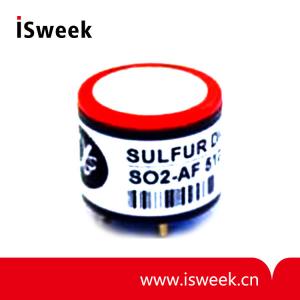Sulfur dioxide (SO2) is a toxic and harmful gas with a pungent odor and hygroscopicity. It is an easily oxidized substance and can be oxidized by oxygen, nitric acid and other compounds into substances such as sulfuric acid (H2SO4) and sulfuric acid dioxide (SO3). SO2 is a colored gas at room temperature, with a higher density than air, is difficult to dissolve in water, and is easily soluble in alkaline solutions. In the air, the concentration of SO2 is usually very low (about 1ppm), but in some industrial and traffic areas, the concentration of SO2 may be very high, posing a threat to the environment and human health. Sulfur dioxide is widely used in industrial sectors, including but not limited to pesticides, man-made fibers, dyes and other industrial sectors. SO2 is often used to produce chemical raw materials such as sulfuric acid, sulfate, carboxylic acid and ammonia. It can also be used to initiate polymerization reactions to produce polymer materials such as cellulose and thermoplastic polyamide. It can also be used as organic solvents and refrigerants, and for refining various lubricants. In addition, SO2 can also be used as a disinfectant, decolorizing agent, bactericide and for waste gas treatment.
Although SO2 is a common chemical substance and is widely used in many fields, it also has certain hazards and risks. The following are some common SO2 hazards: 1. Harms to the human body SO2 is an irritating substance that can cause irritation and damage to the eyes, nose, throat, lungs, and skin. Long-term exposure or high-concentration exposure to SO2 can cause long-term harm to the respiratory system, digestive system, nervous system, etc. Therefore, when producing and using SO2, it is necessary to take preventive measures such as equipping with protective equipment, ensuring ventilation, and wearing respirators. 2. Harm to the environment. SO2 is usually discharged into the atmosphere in waste gases generated by industries such as chemical industry and electric power, and is oxidized by moisture and oxygen in the atmosphere to generate acid rain and acid deposition (Acid Deposition). Acid rain and acidity decline will make surface water acidic, affect aquatic life, and cause soil acidification, vegetation withering and other problems. 3. Fire and explosion hazard : Under certain conditions, SO2 will react with oxygen, hydrogen, etc., causing fire and explosion. Therefore, when using SO2, you need to pay attention to avoid contact with fire sources and ensure that SO2 is stored and used in a ventilated and low-temperature environment.

Therefore, when producing and using SO2, it is necessary to strictly implement relevant safety management regulations and operating procedures, take preventive measures, and master safety skills and emergency measures to ensure the safety of production and use. We also need to always pay attention to gas leaks to avoid losses to our lives and production. The use of sulfur dioxide gas sensors can effectively prevent the losses caused by sulfur dioxide gas leaks! isweek Engineering and Mining Network technical engineers recommend the following models for use Detecting sulfur dioxide gas concentration:
1. British Alphasense sulfur dioxide sensor-SO2-AF sulfur dioxide sensor SO2-AF electrochemical sensor has high sensitivity and good selectivity. It can filter dust and small water droplets. It has good low-concentration output linearity and good stability. The range is 0~50ppm, working environment is -30~50℃, 15~90%RH, resolution is 0.1ppm, mainly used for flue gas analyzers and handheld SO2 alarms.
2. British Alphasense Sulfur Dioxide Sensor – SO2-BF Sulfur Dioxide Sensor SO2-BF electrochemical sensor has the advantages of high sensitivity, good selectivity, can filter dust and small water droplets, good low-concentration output linearity, and good stability. The measuring range is 0~100ppm. , the working environment is -30~50℃, 15~90%RH, and the resolution is 0.1ppm. It is mainly used in sulfur dioxide gas transmitters and sulfur dioxide detection occasions, petroleum, chemical and other industrial fields.








